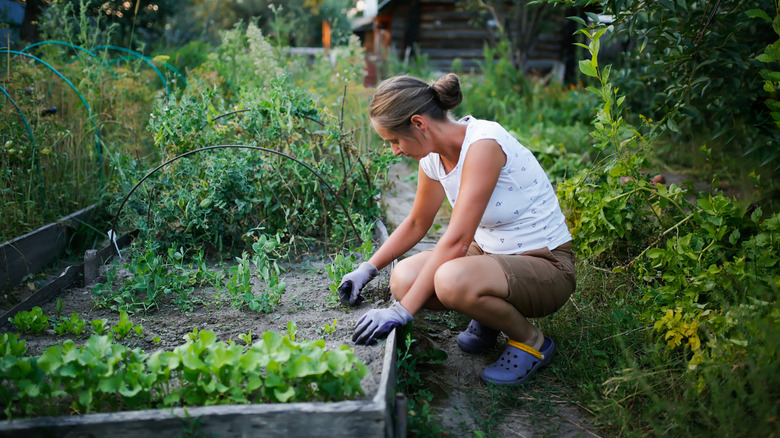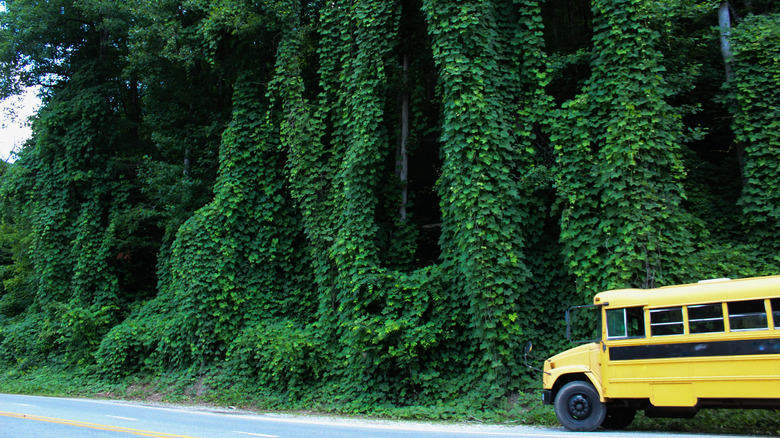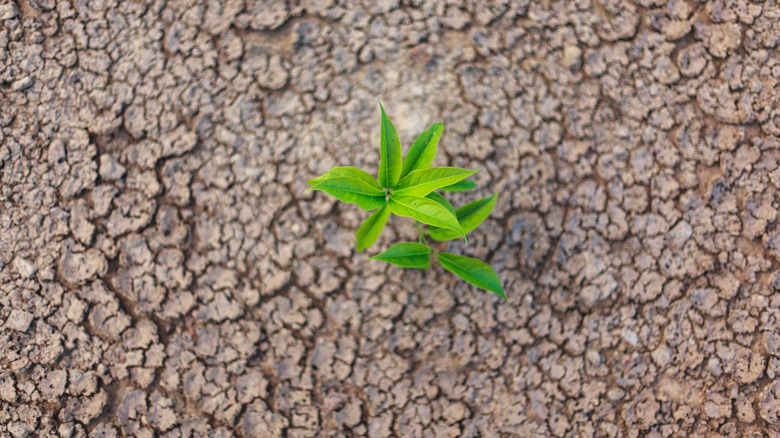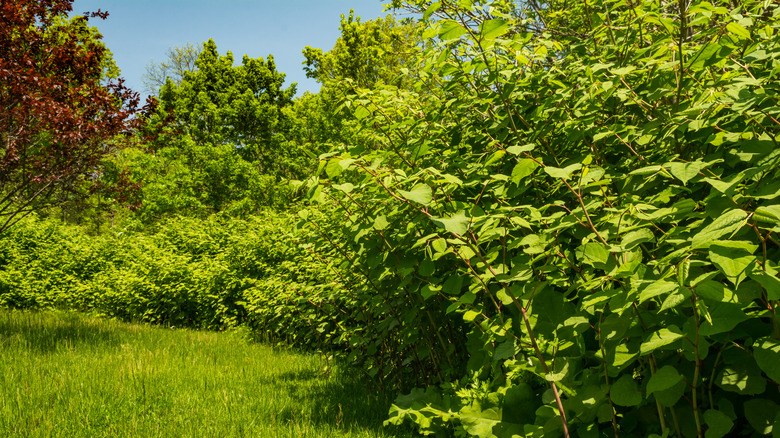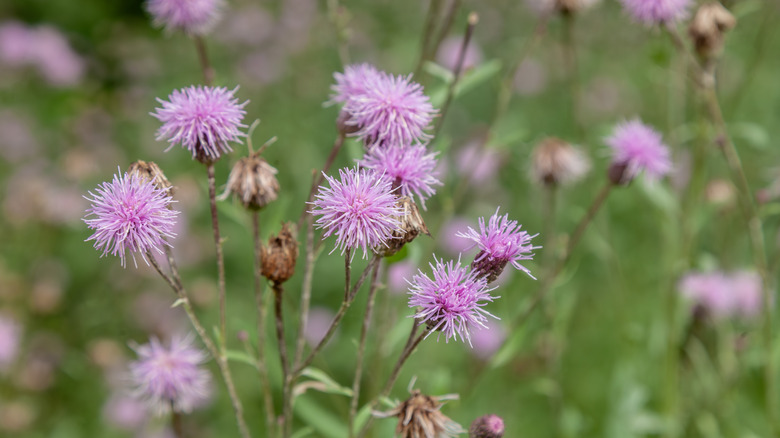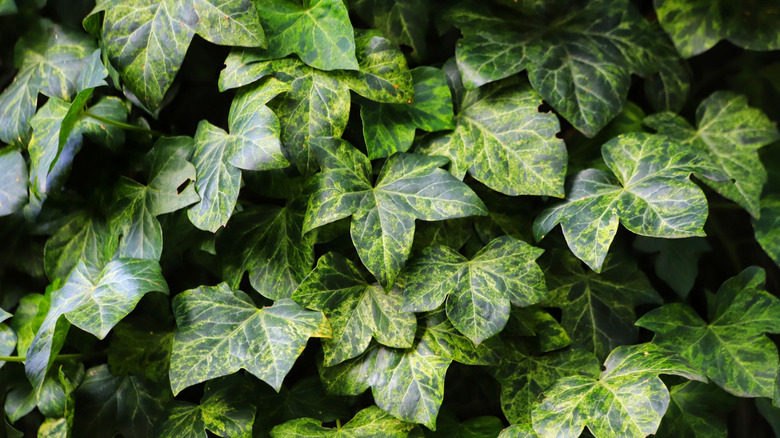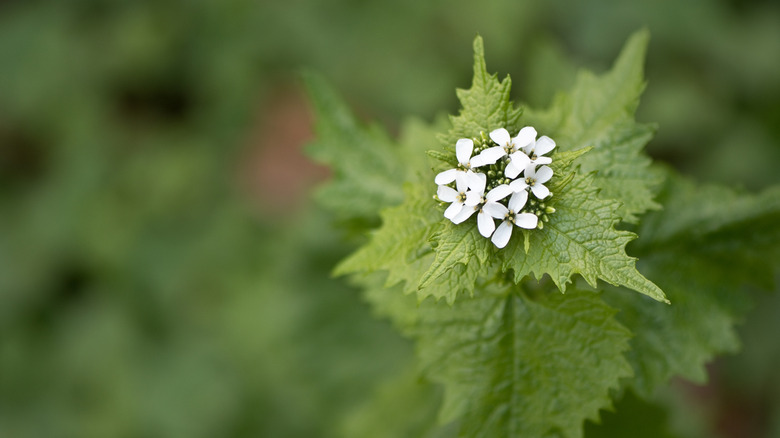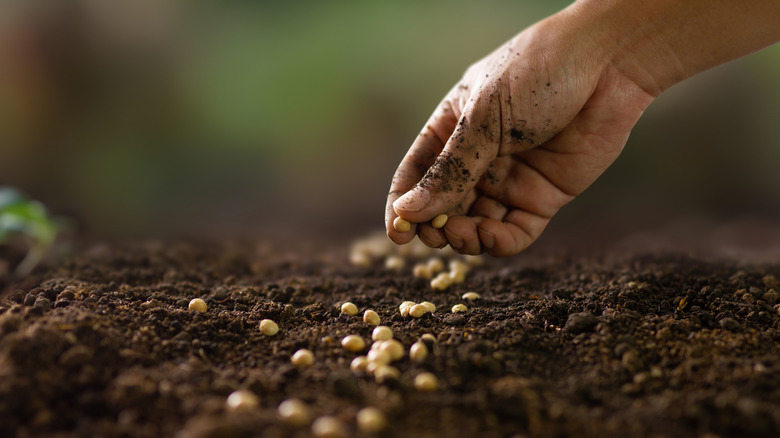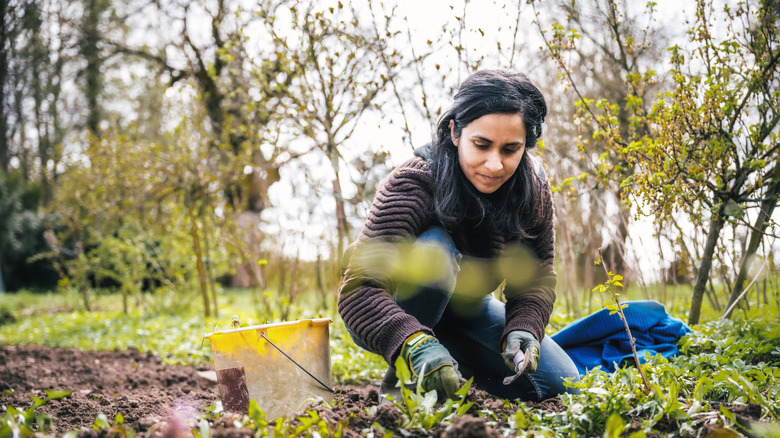How To Identify An Invasive Plant: 8 Traits That Give Them Away
Invasive plants have detrimental effects on the local ecosystem. They are non-native, spread quickly, and can overtake an area when not kept in check. Many will force out native plants, leading to a lack of diversity and issues with food sources for local animals and insects. This can have a knock-on effect, impacting whole food webs.
Although there are some beautiful flowering plants that are considered invasive species, their attractiveness doesn't take away from their harmful effects. If you have an invasive plant in your yard, you need to remove it as soon as you can. To do so, pull out the invasive plant by the roots and place it in a contractor-grade garbage bag. You shouldn't put invasive plants in compost, as they can take root or spread seeds.
To care for your yard and the surrounding ecosystem, it is essential to remain vigilant regarding invasive species. They may crop up in your yard, even if you haven't planted them, and knowing how to identify invasive plants enables you to manage your garden and protect the environment. So, what are some signs that the unknown plant in your garden may be invasive?
It is taking over fast
Invasive plants spread easily and quickly, much faster than native species. If the unknown plant in your yard seems to get surprisingly bigger every time you look at it, it might be invasive. Famously known as the vine that ate the South, kudzu (Pueraria montana var. lobata) is a great example of a rapidly spreading invasive species. This vine can grow up to a foot a day, covering trees, hillsides, and power lines in a single season. Like many other invasive species, kudzu was introduced as an ornamental plant before it quickly took over.
It tolerates almost anything
Many invasive species are able to establish themselves quickly because they aren't that picky about where they grow. Invasive plants will survive and even thrive in poor or dry soils, and they often grow well in disturbed soils. If an unknown plant is flourishing on an unhealthy and poor patch of soil that killed your native perennials, take a closer look to see if it's invasive. Certain invasive species, such as the tree of heaven (Ailanthus altissima), will crop up anywhere from sidewalk cracks to forest edges.
Nothing else grows nearby
Invasive species don't let other plants in. They take over whole areas, reproducing rapidly and forming thick patches or mats where nothing else can grow. Some invasive plants spread through underground stems, whereas others spread through abundant seed dispersal. However, it is not just their aggressive spreading habit that prevents other plants from growing. Certain invasive species produce toxic chemicals that harm other plants. For example, spotted knapweed (Centaurea stoebe) produces a chemical called catechin, which acts as a natural herbicide that kills other plants in the surrounding area.
It keeps coming back
Invasive plants are persistent. Unlike many common weeds that are annoying but can be managed easily, invasive plants persist and continue to spread, even when pulled, mowed, or cut. This is because many invasive species have aggressive root systems that enable the plants to put on new growth in your garden. Sometimes, these root systems mean that a single plant can spread vast distances. For example, the Canada thistle (Cirsium arvense) is an invasive species that can grow 12 feet of lateral roots in a year, with new plants developing from root fragments.
It appears earlier or stays green longer
A lot of invasive weeds will be the first in your yard to produce green leaves after the winter and retain them well into the fall. This extended green period allows them to outcompete native plants for food and light by prolonging the photosynthesis process. More light and food mean that they can grow bigger and overtake other flowers and shrubs. Invasive species such as wintercreeper (Euonymus fortunei) and English ivy (Hedera helix) will stay green year round, even when native plants die back. However, there are many native evergreen plants, so it is not a hard rule.
Wildlife doesn't seem to use it
A lot of invasive plants thrive because they lack the native predators that would normally feed on them. When insects and birds visit your yard, they may avoid a non-native plant in favor of a native one, allowing the invasive species to thrive. If you have a plant in your yard that seems to be left alone by animals, it may be invasive. Take a look at its leaves to see if they have been nibbled, and examine the plant for other signs of animal activity. No signs could mean it is invasive.
It produces tons of seeds
What makes a non-native plant invasive is its ability to spread quickly and create issues for the overall biodiversity and ecosystem of the environment in which it is spreading. One way many invasive plants do this is by producing a large amount of seeds that spread via wind, animals, and humans. For example, Japanese stiltgrass (Microstegium vimineum) is an invasive annual plant in many regions, spreading exclusively through its seeds. Every year, each plant can produce up to 1,000 seeds, with the seeds remaining viable for up to five years.
You don't remember planting it
If an unknown shrub or flower has appeared in your yard and you don't remember planting it, it could be invasive. Invasive plants often seem as if they have appeared out of nowhere, and this is due to their relentless spreading and reproducing abilities. They may have spread from your neighbor's yard, from bird droppings, or even from hitchhiking in cars and vans. It can be difficult to keep invasive plants from spreading, and this means they can crop up everywhere, even if you are always weeding and tending to your yard!
